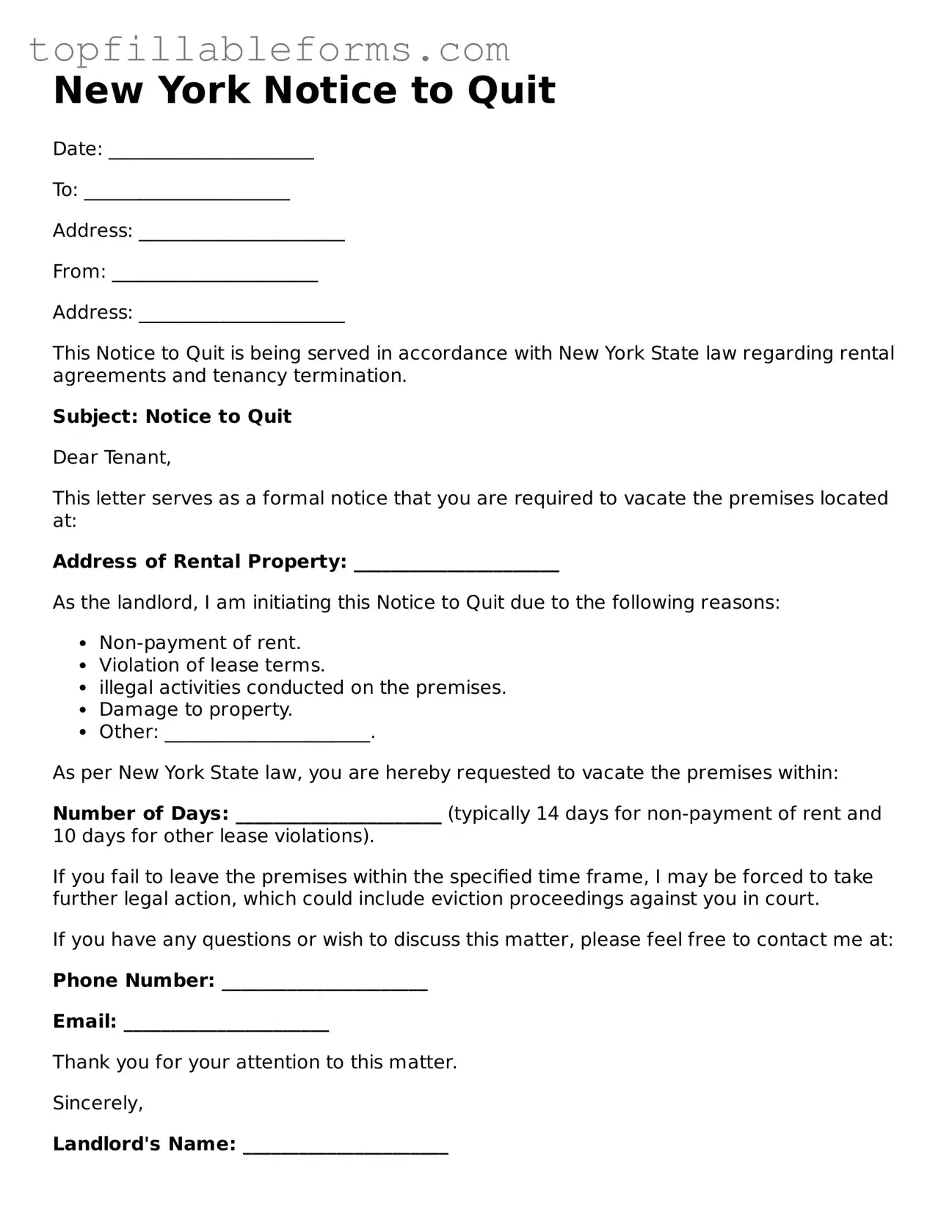New York Notice to Quit
Date: ______________________
To: ______________________
Address: ______________________
From: ______________________
Address: ______________________
This Notice to Quit is being served in accordance with New York State law regarding rental agreements and tenancy termination.
Subject: Notice to Quit
Dear Tenant,
This letter serves as a formal notice that you are required to vacate the premises located at:
Address of Rental Property: ______________________
As the landlord, I am initiating this Notice to Quit due to the following reasons:
- Non-payment of rent.
- Violation of lease terms.
- illegal activities conducted on the premises.
- Damage to property.
- Other: ______________________.
As per New York State law, you are hereby requested to vacate the premises within:
Number of Days: ______________________ (typically 14 days for non-payment of rent and 10 days for other lease violations).
If you fail to leave the premises within the specified time frame, I may be forced to take further legal action, which could include eviction proceedings against you in court.
If you have any questions or wish to discuss this matter, please feel free to contact me at:
Phone Number: ______________________
Email: ______________________
Thank you for your attention to this matter.
Sincerely,
Landlord's Name: ______________________
